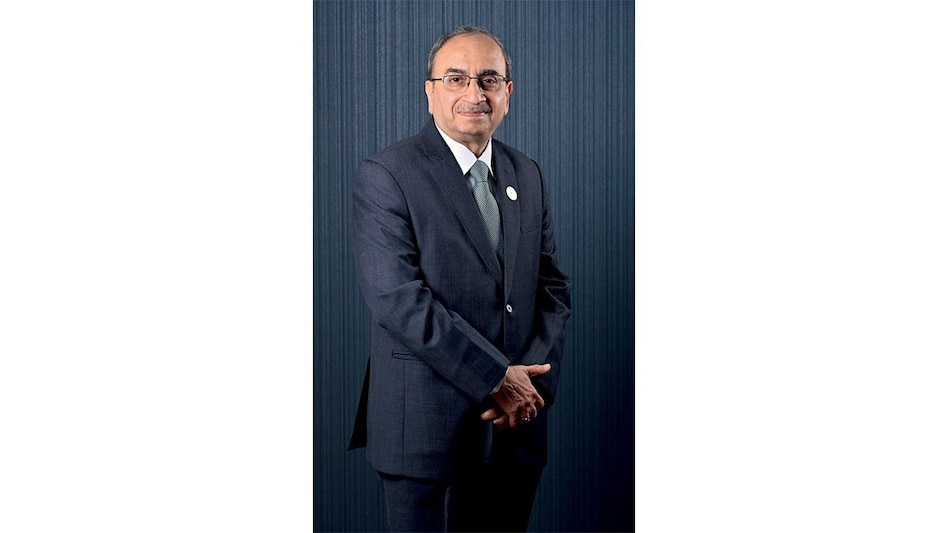 Building on the legacy of some illustrious leaders, Dinesh Kumar Khara has taken State Bank of India, India's biggest lender, to new heights
Building on the legacy of some illustrious leaders, Dinesh Kumar Khara has taken State Bank of India, India's biggest lender, to new heights  Building on the legacy of some illustrious leaders, Dinesh Kumar Khara has taken State Bank of India, India's biggest lender, to new heights
Building on the legacy of some illustrious leaders, Dinesh Kumar Khara has taken State Bank of India, India's biggest lender, to new heights In 2017, Rajnish Kumar and Dinesh Kumar Khara, both MDs then, were in the running for the chairmanship of State Bank of India. While Kumar was picked as Chairman then since he had joined SBI as probationary officer four years before Khara and he was also a year older in the senior management team, it was a given that Khara would replace Kumar after his retirement. Even members of the Banks Board Bureau—set up by the government to recommend people to head public sector banks—who had interviewed him then, were impressed. “We found him intellectually very sharp, with a lot of innovative and practical ideas,” says a senior member, requesting anonymity. Finally, Khara was elevated to the corner office in October 2020, at a time when banks and the economy—both global and domestic—were facing challenges due to the pandemic.
Two and a half years into the top job and Khara, despite facing a number of challenges, is sitting on record profits. Not only that, SBI’s asset quality has improved, its costs are under control and the share of safe and secure retail assets have also increased. It comes as no surprise then that Khara has emerged as the winner in the BFSI category of the BT-PwC India’s Best CEOs ranking.
With an MBA from Delhi University’s Faculty of Management Studies, this Delhi lad had started as a probationary officer at a branch in Jaipur, almost four decades ago. “Apart from civil services, banks were regarded as one of the best places to work,” says Khara, recalling his days of manual banking and the importance of ensuring that correct information was entered into the accounts. “Today’s young bankers will not understand how mental computing used to work in those days,” grins Khara.
Many SBI insiders say that Khara made it to the top because of the challenging assignments he took and excelled at. For instance, his most difficult stint was as a deputy general manager in the Naxalite-affected region of Chhattisgarh, where he was in-charge of the state’s 250-odd branches. “It was the zone with the widest coverage and the most difficult area,” says a former colleague, requesting anonymity. Understandably, not many were keen on such a posting, but Khara camped at the regional office in Jagdalpur that oversees the branches in Bastar, Dantewada and Kirandul. “I always used to visit the branches once a month,” recalls Khara. During his stint there, SBI implemented its core banking solution, issued debit cards and installed ATMs at railway stations.
Soon after his Chhattisgarh stint, Khara was tasked with leading mergers and consolidation at the bank. The highlight there was the merger of State Bank of Saurashtra that SBI had announced in 2007. To get this done seamlessly, Khara studied the Supreme Court’s ruling on the Punjab National Bank and New Bank of India merger case—where employee unions had contested the plan—before developing SBI’s strategy. His in-depth analysis also laid the groundwork for the subsequent mergers of six other associate banks a couple of years later.
Khara’s big break came in November 2013, when then Chairman Arundhati Bhattacharya nominated him as MD and CEO of SBI Mutual Fund—his biggest assignment outside the bank. This gave him the exposure of dealing with stock market regulators, small investors and a different ecosystem of distributors. “Learning, assimilating and then implementing is the process one follows,” says Khara, who led the company for three years, during which time it emerged as the largest ETF (exchange-traded fund) manager in India. “It was under Khara’s tenure that the fund house introduced online investing,” says an employee there, requesting anonymity.
Following this, Khara was brought back to SBI as MD of Corporate Banking & Subsidiaries in August 2016. Here, he kicked off the synergies within the bank’s vast network, employees and customers with the foresight that they were not just looking at plain-vanilla banking anymore. “Customers were at different stages of their lives. They were looking at alternative assets, such as mutual funds, life insurance, general insurance, pensions, etc.,” says Khara. During this time, SBI’s subsidiaries SBI Cards and SBI Life also tapped the public markets; and it introduced the corporate solution group—that would be a one-stop shop for the bank’s suite of services. “The foundation was laid at that time, but now it has started delivering value and creating value for our corporate clients,” says Khara, proudly.
After stepping into the corner office, Khara has been focussing on the productivity of the bank’s employees. “The idea is to prepare people for delivering returns. As a bank, we are generally focussed on the top line, but we have also started focussing on the bottom line and then RoA and RoE,” he says. Essentially, he has tried to align the performance of the bank with the key parameters by which investors evaluate it. “I started passing on relevant information to all our employees so that their priorities would not get lost,” he says. Clearly, SBI is on a strong footing. “The way the bank is evolving is [a reflection of] the way the Indian economy is evolving. There is a growing middle class, with aspirations for a better life. This is going to offer a huge opportunity for us to grow,” says Khara, with a twinkle in his eye.
@anandadhikari
Copyright©2023 Living Media India Limited. For reprint rights: Syndications Today